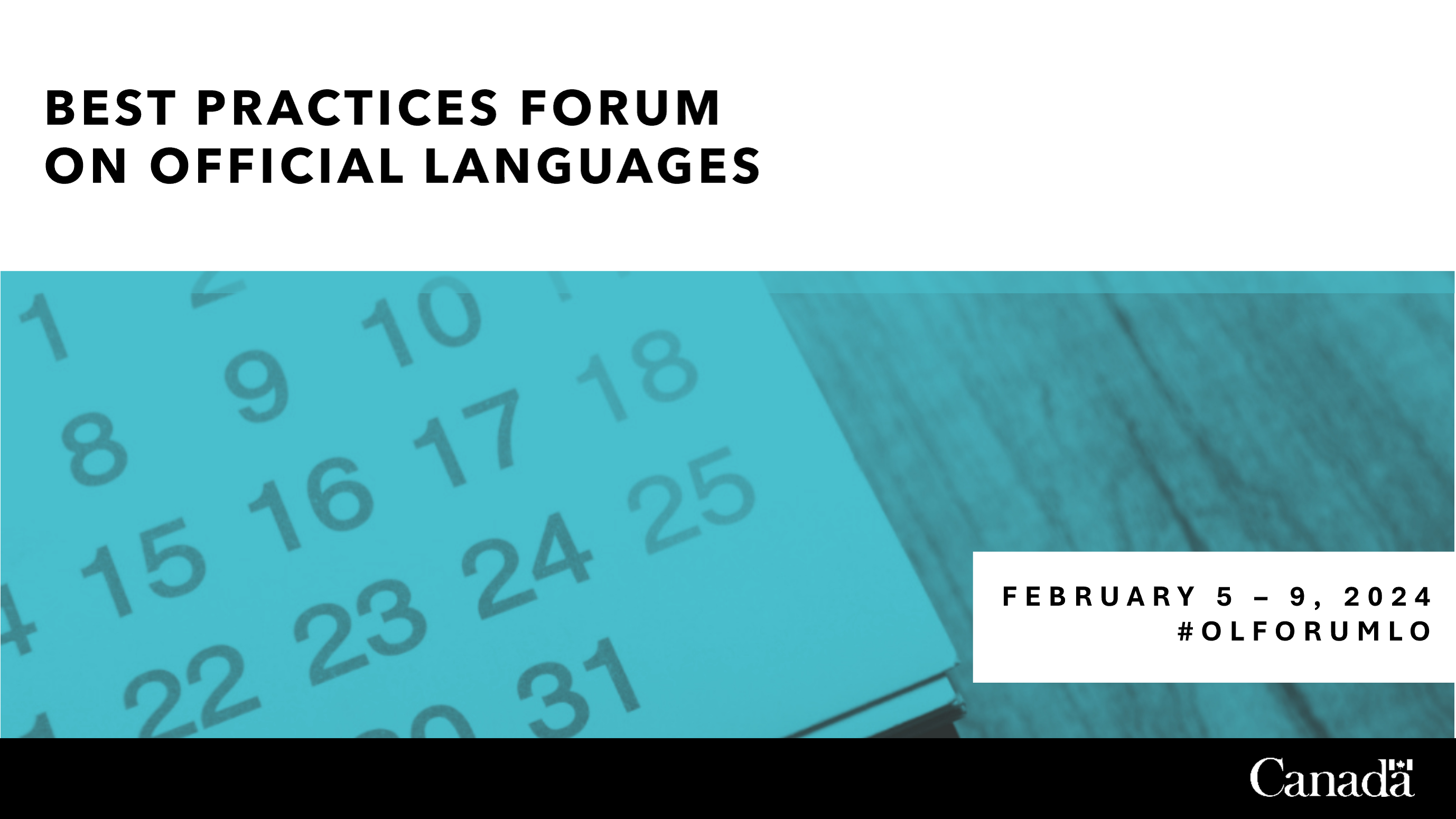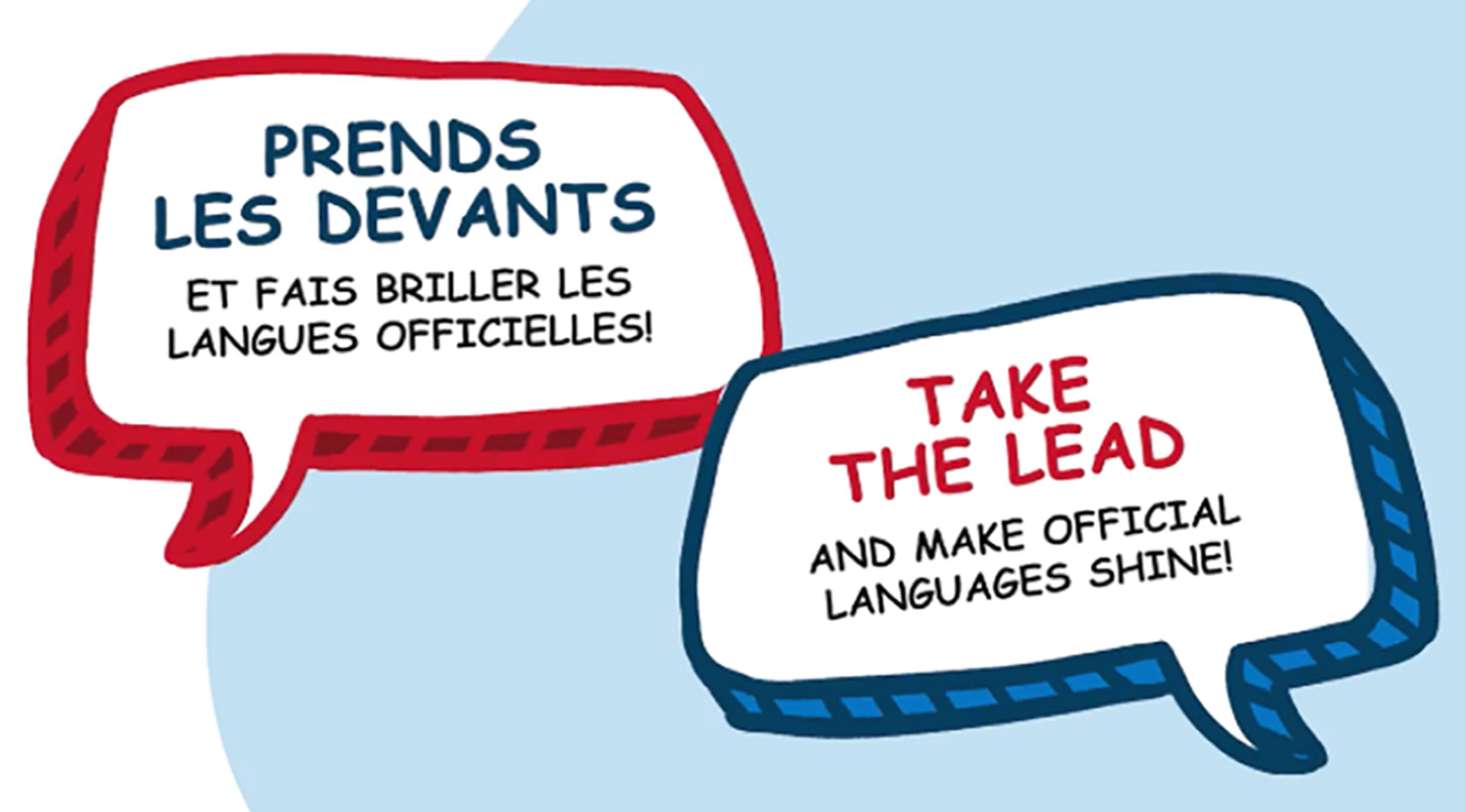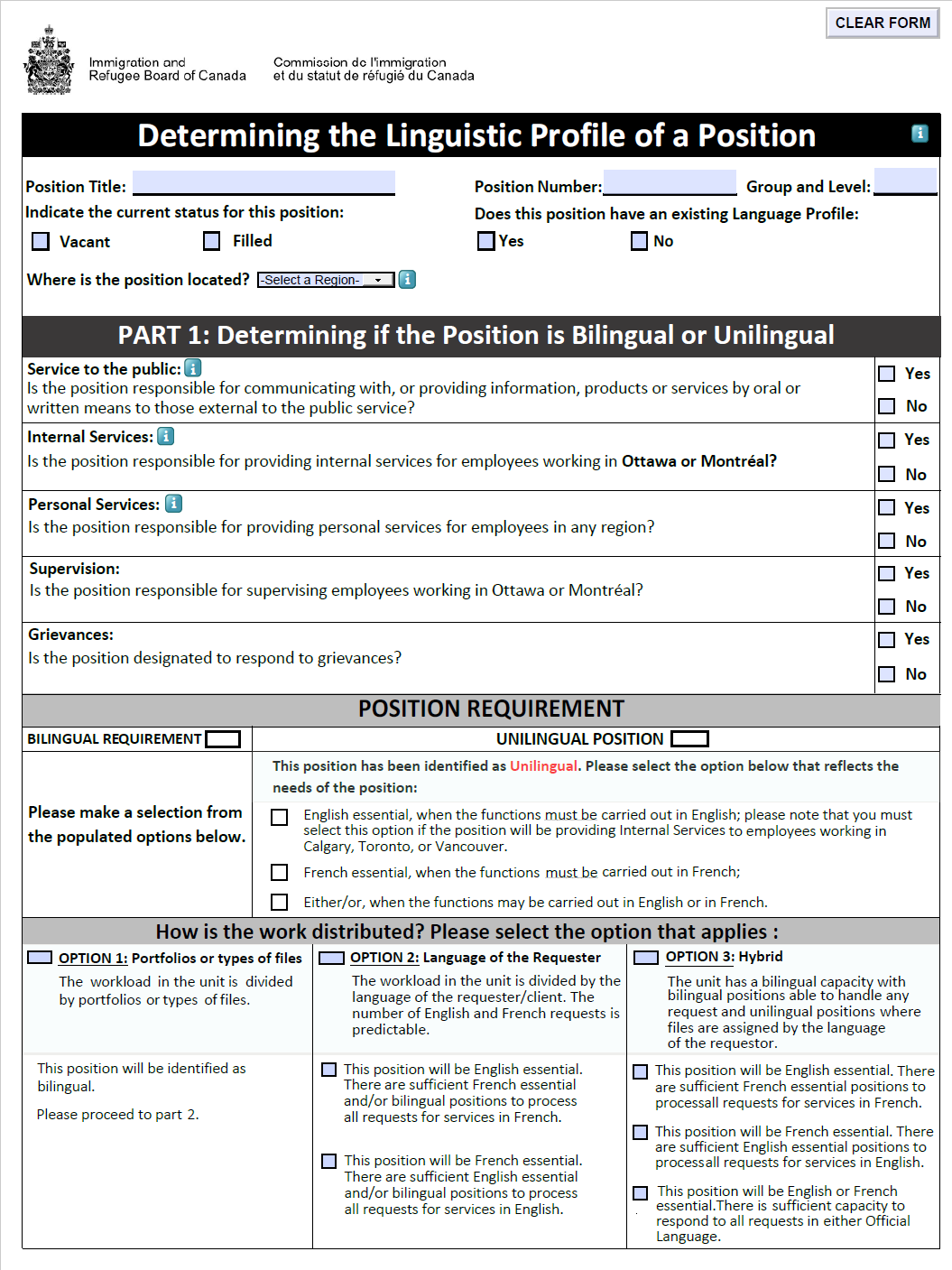|
BEST PRACTICES
Ressources
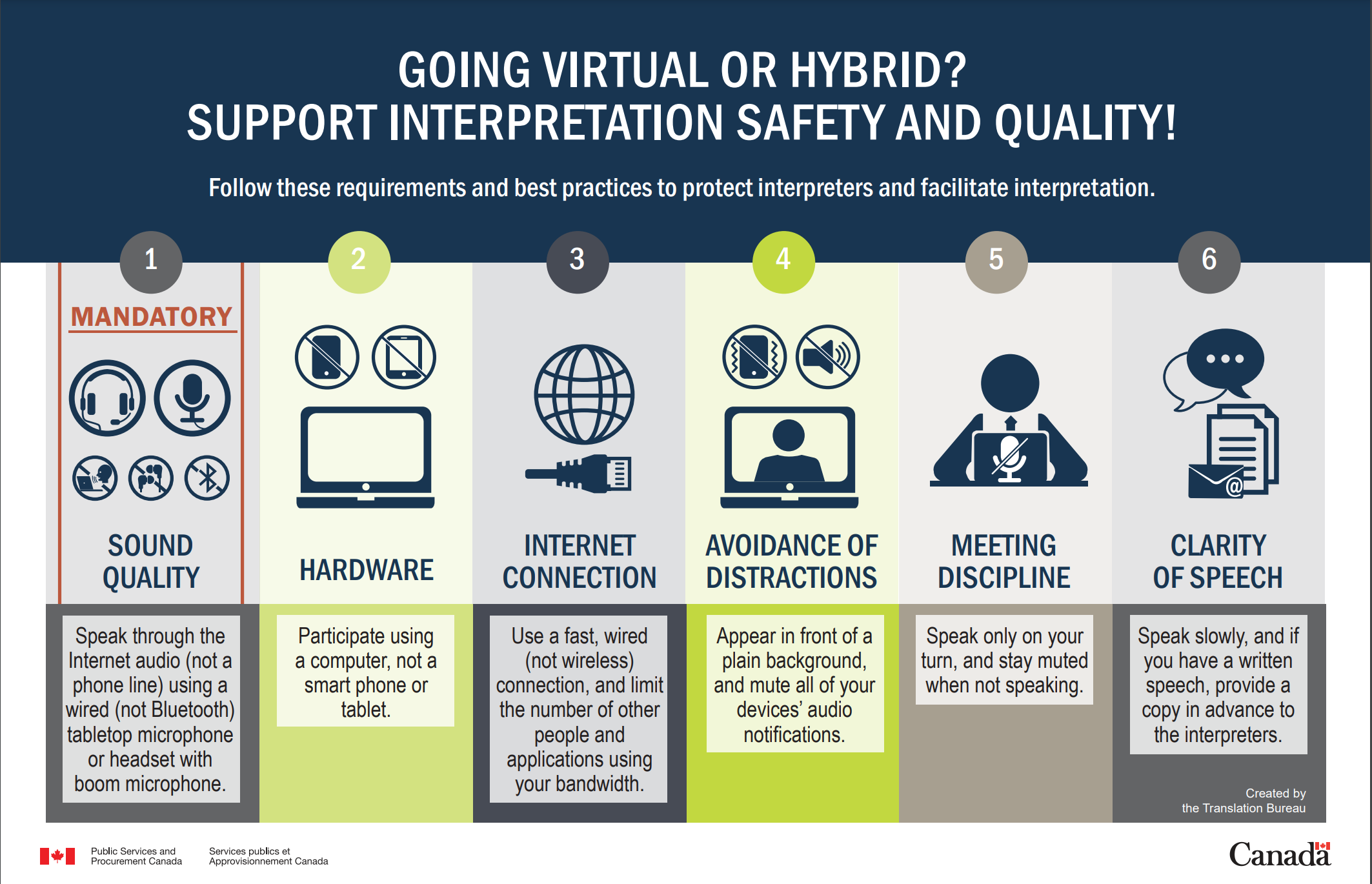
|
Requirements and best practices to support interpretation safety and quality
Translation Bureau
Interpreting is a demanding and complex task that requires very precise technical conditions to be accomplished safely and efficiently. Use this helpful cheat sheet to keep in mind what you must do to help and protect interpreters when participating virtually in an interpreted meeting.
|
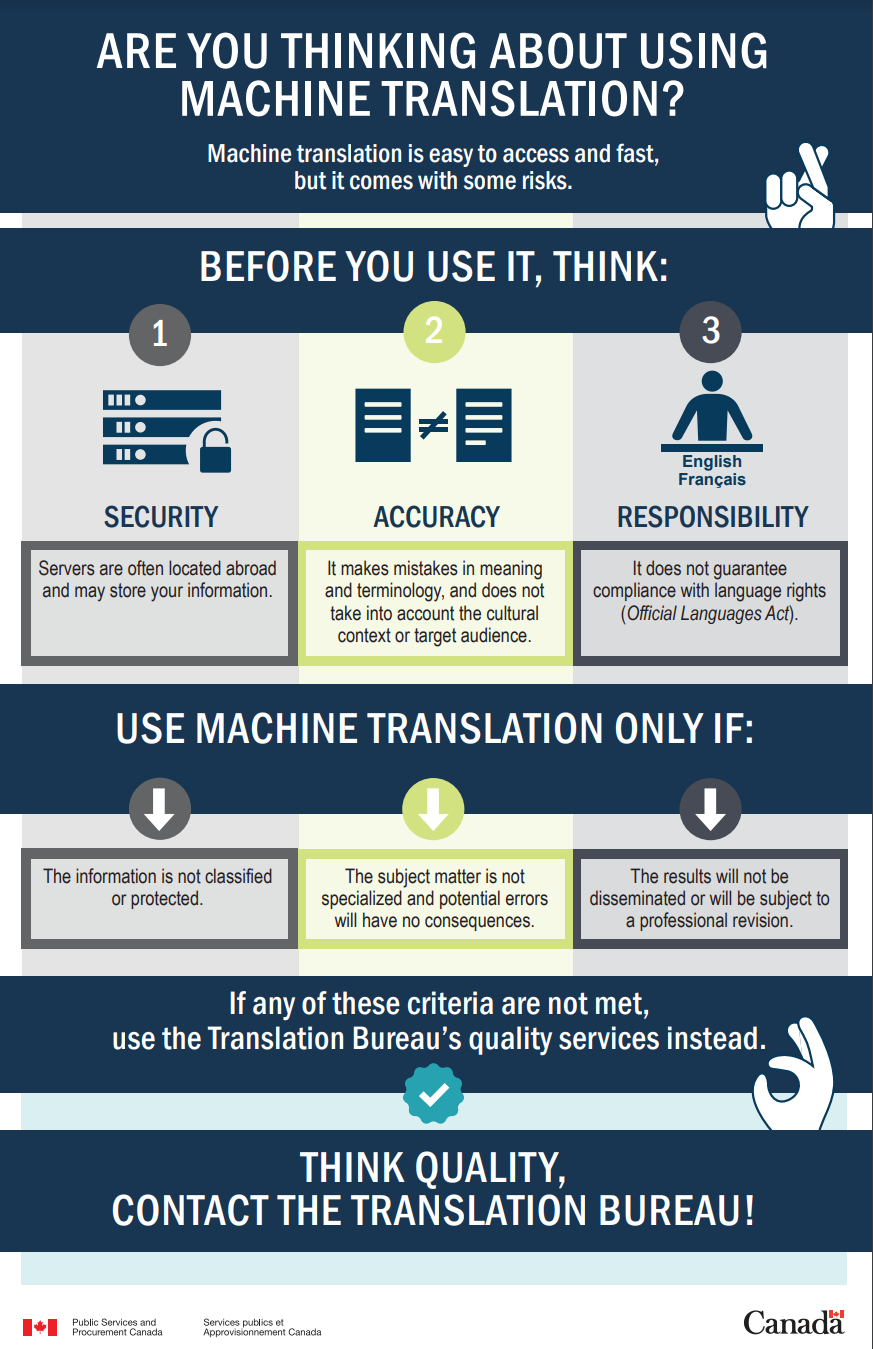
|
Best practices regarding the use of machine translation
Translation Bureau
Today’s machine translation tools are fast and easy to use and can sometimes produce impressive results. However, they have drawbacks that should be kept in mind. The Translation Bureau offers some tips to help you determine when machine translation should be avoided.
|
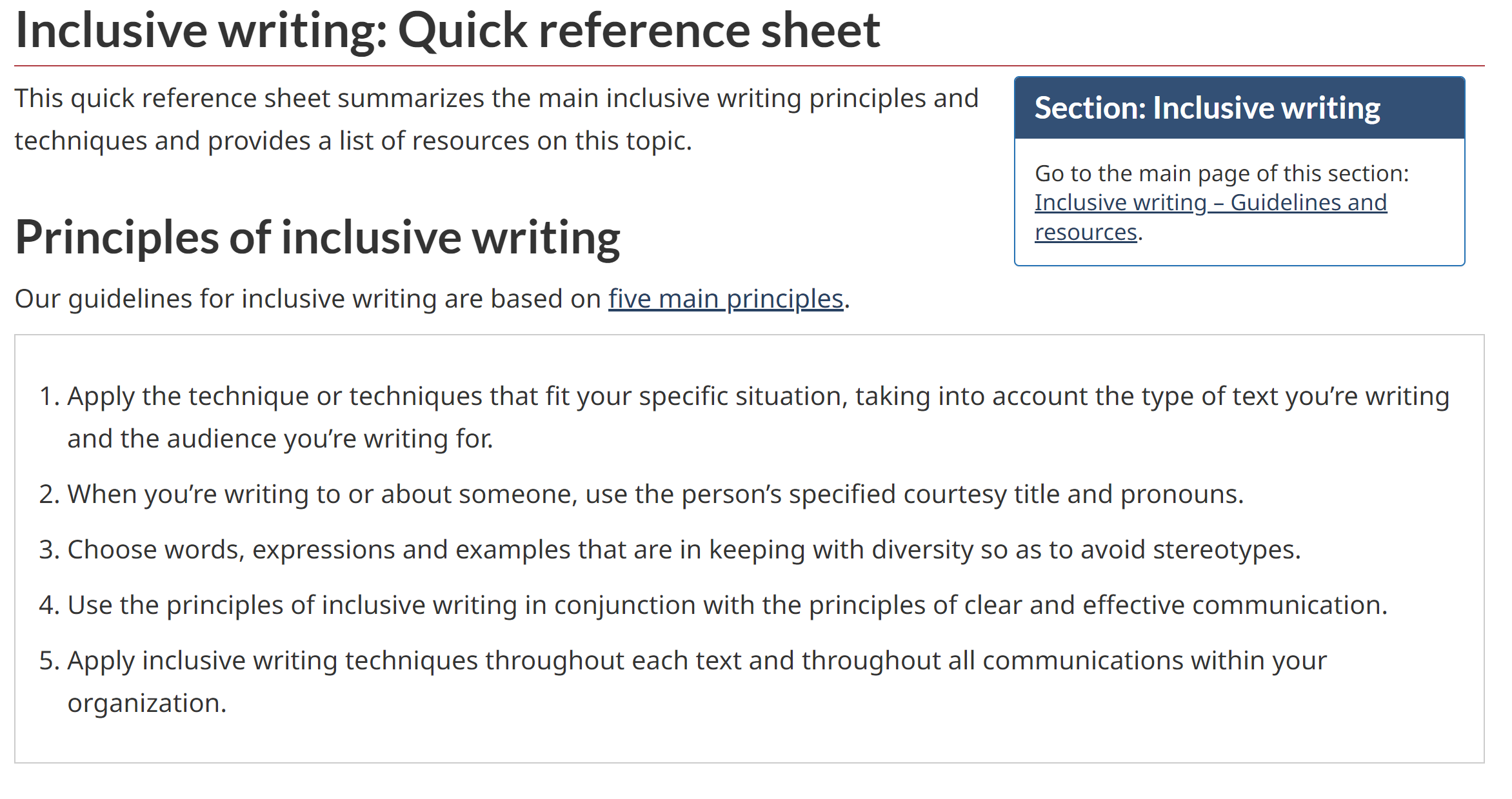
|
Inclusive writing: Quick reference sheet
Language Portal of Canada
This checklist summarizes the main principles and procedures of inclusive writing and presents various resources on the subject.
|
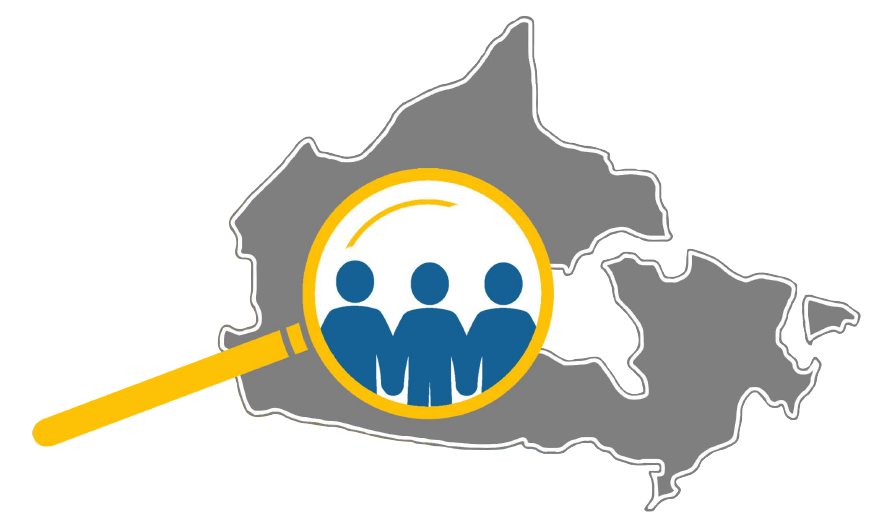
|
Official Languages Lens – Part VII of the Official Languages Act
Employment and Social Development Canada
The Official Languages Lens is part of Employment and Social Development Canada’s efforts to support the implementation of the Official Languages Act (OLA). It was developed to raise awareness about Part VII of the OLA’s specific requirements and to provide employees responsible for policies and programs with a tool to take its specific requirements into account in order for the Department to meet its legal obligations.
|
Video Gallery
|
|
Take the lead and make official languages shine!
Canadian Heritage
|
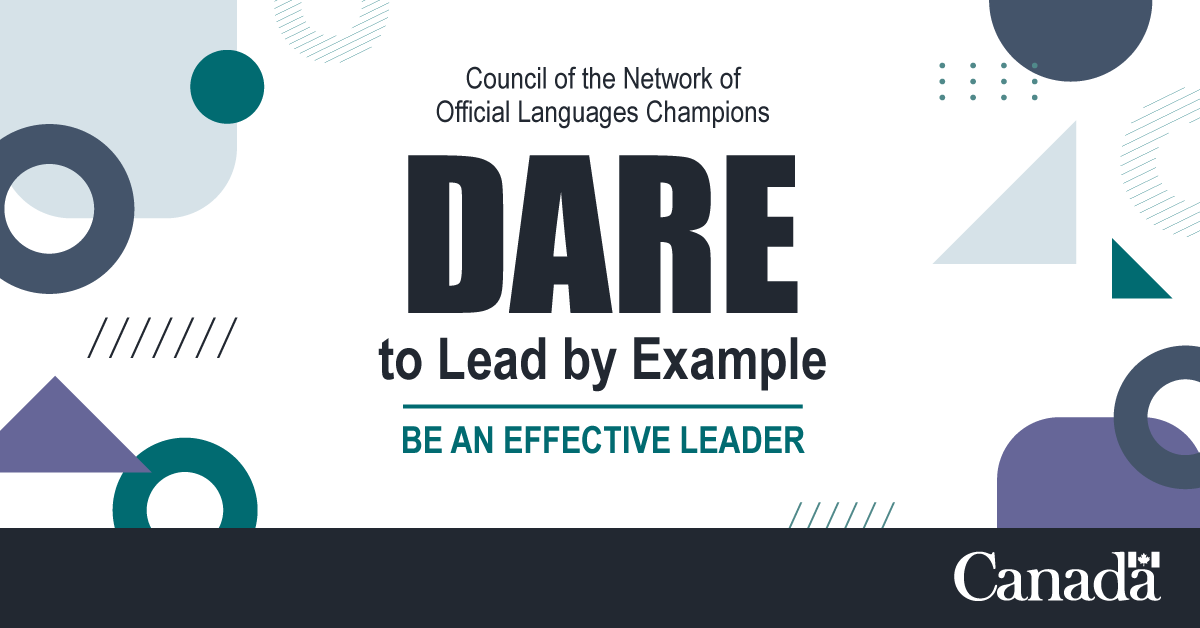
|
Setting the Tone for Official Languages
Council of the Network of Official Languages Champions
|

|
Language training options for newcomers to Canada
Immigration, Refugees and Citizenship Canada
|

|
Language training in support of the Francophone integration pathway
Immigration, Refugees and Citizenship Canada
|

|
Rural Manitoba restaurant gets help re-inventing its business during the pandemic
Prairies Economic Development Canada (PrairiesCan)
|
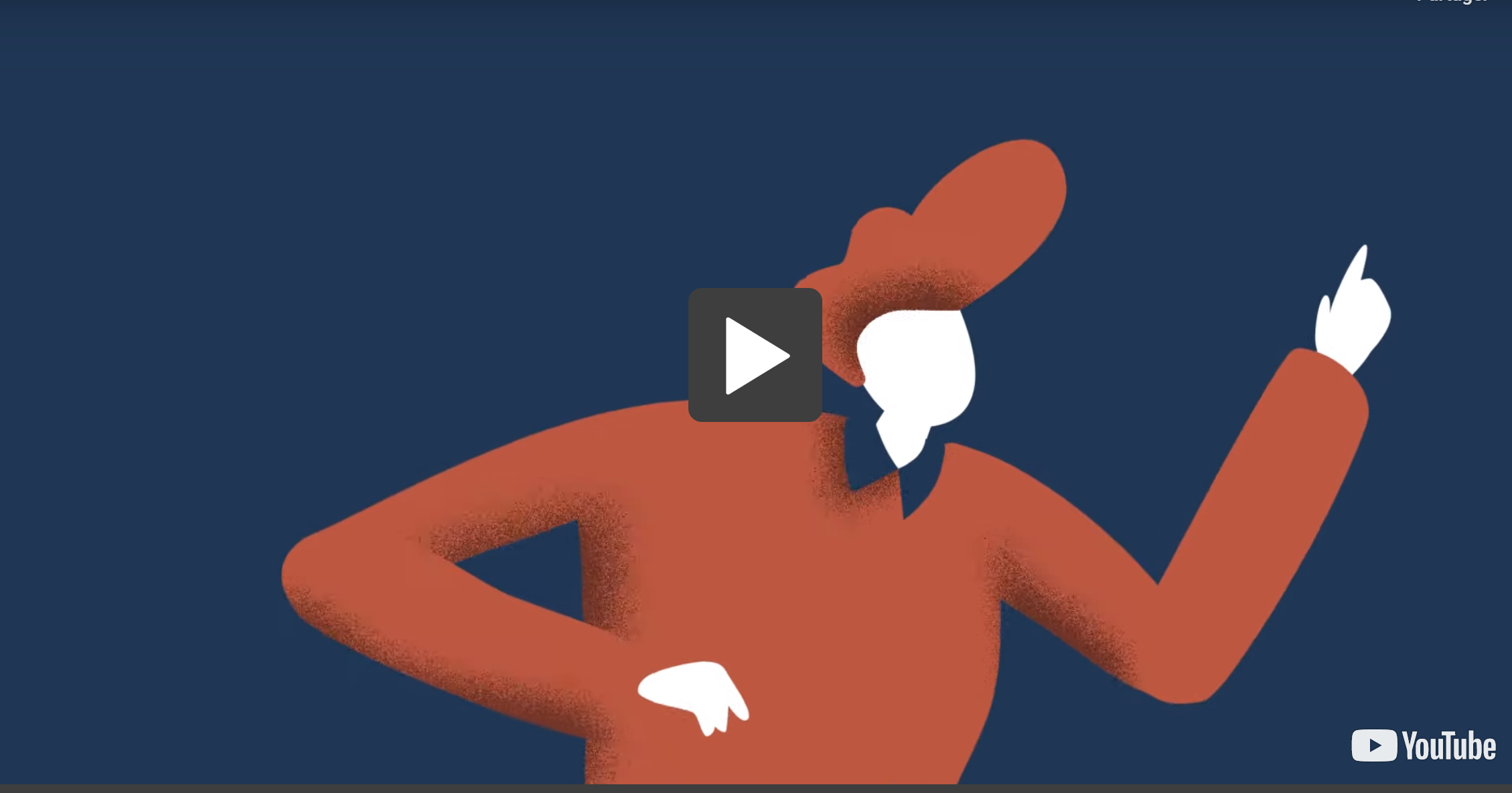
|
Discover the Language Navigator
Language Portal of Canada
|
Archived: 2022 Forum
Resources
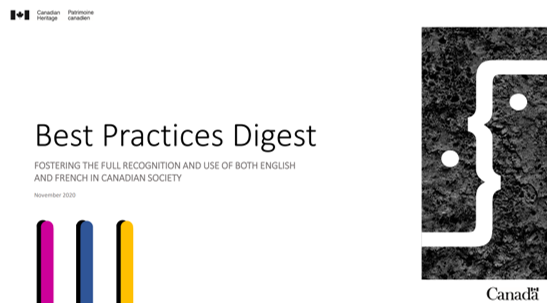
|
Best Practices Digest : Fostering the Full Recognition and Use of both English and French in Canadian Society
Under section 41 of the Official Languages Act (OLA), the Government of Canada is committed to enhancing the vitality of the English and French linguistic minority communities in Canada and supporting and assisting their development; and fostering the full recognition and use of both English and French in Canadian society. The OLA gives Canadian Heritage (PCH) the mandate to coordinate the implementation of these commitments in all federal institutions. To fulfill that mandate, PCH develops tools to help federal institutions optimize their contribution. The main objective of this tool is to provide examples of best practices that help foster the full recognition and use of both English and French in Canadian society. These examples are meant to give institutions suggestions on linguistic duality best practices that could be incorporated in their respective mandates.
|

|
Be a language buddy
|
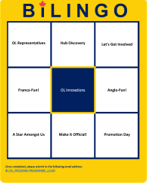
|
Bilingo
Official languages: a fun challenge! ESDC launched a friendly competition for senior managers to encourage linguistic duality and linguistic security in the workplace. The Bilingo Challenge was a two-month period of fun activities to promote the use and practice of both official languages. Branches and regions were invited to complete a single Bilingo card on which each of the nine boxes contained a theme related to official languages. At the end of the Bilingo challenge, branches and regions were asked to submit their participation report card with a brief description of the activities organized for each of the themes on the Bilingo card. A selection committee then reviewed the entries and named the winning branch/region that stood out the most for its creativity in implementing its activities and its participation rate. Bonus points were also awarded for promotional efforts, notably through the use of Bilingo Challenge backgrounds.
|
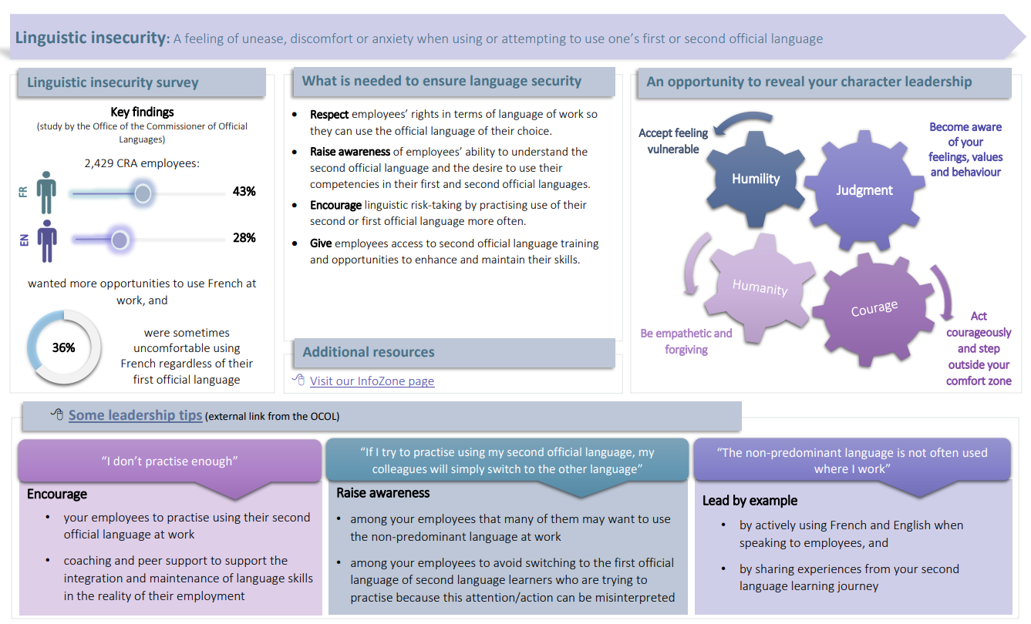
|
CRA Infographic: Understanding Linguistic Insecurity
As part of the “Inclusion of official languages at the CRA, a benefit to all!” campaign, the Agency published an infographic on linguistic insecurity. This easy-to-understand infographic shares key findings for the CRA from the Office of the Commissioner of Official Languages survey on linguistic security. In addition, it lists and provides examples of behaviours to ensure language security and summarizes how managers can leverage linguistic security as part of their character leadership.
|
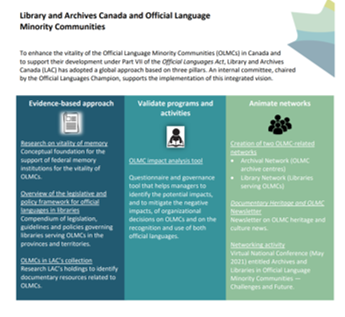
|
Library and Archives Canada and Official Language Minority Communities
To enhance the vitality of the Official Language Minority Communities (OLMCs) in Canada and to support their development under Part VII of the Official Languages Act, Library and Archives Canada (LAC) has adopted a global approach based on three pillars. An internal committee, chaired by the Official Languages Champion, supports the implementation of this integrated vision.
|
|
|
Linguistic Profile Tool
The Immigration and Refugee Board (IRB) has developed a Linguistic Profile Tool to help managers objectively determine the language requirements of positions to meet OL obligations. The tool aims to ensure that the linguistic identification of positions effectively reflects the duties of the position and meets the OL requirements related to the linguistic identification of a position, the staffing of bilingual positions, and the equal participation of English-speaking and French-speaking Canadians in federal institutions. The tool is designed to comply with official languages legislative requirements and the Treasury Board Secretariat policy and directives. The IRB Linguistic Profile Tool has been in practice at IRB since June 2021 and has proven to be practical and effective.
|
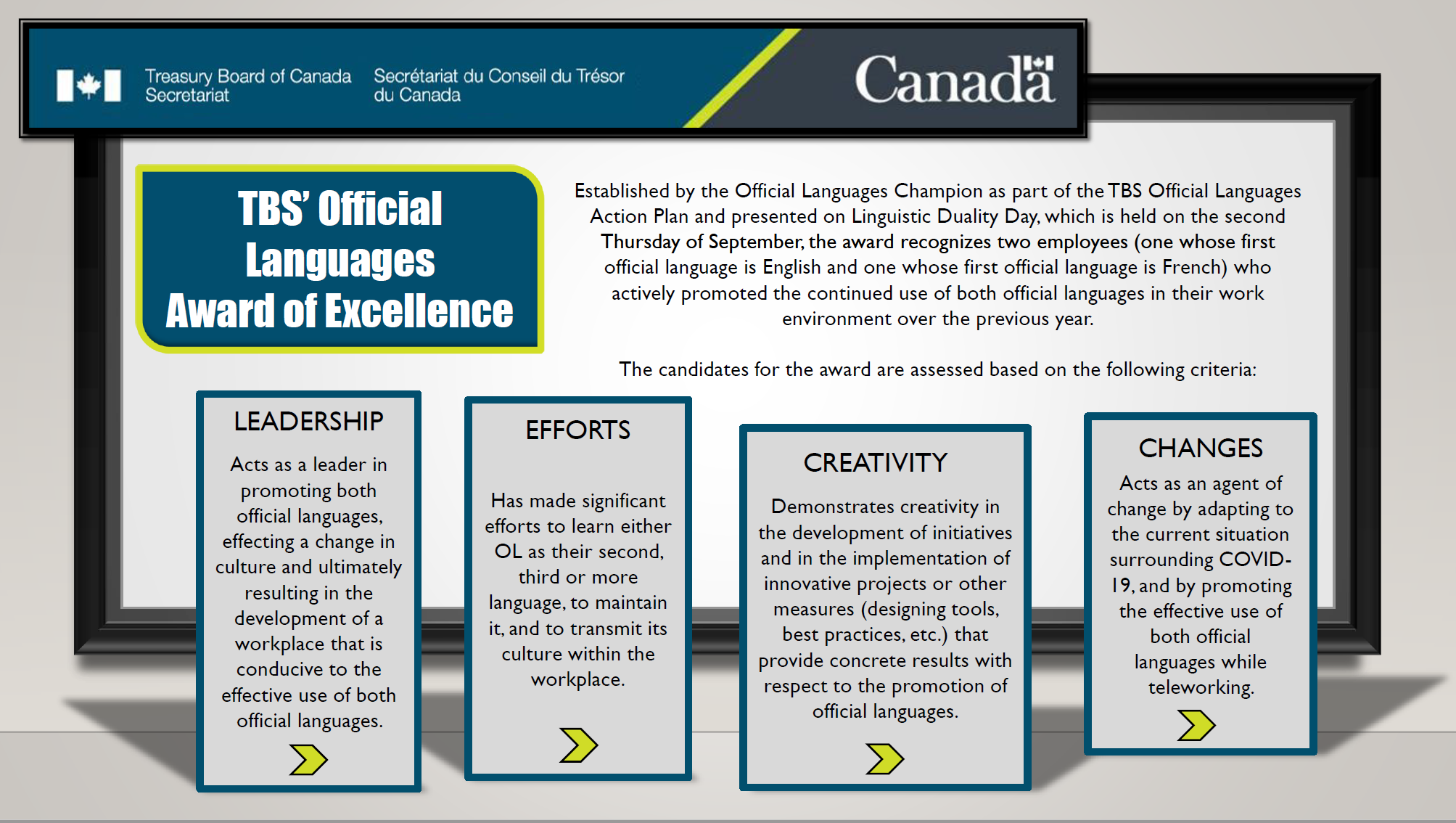
|
OL Award of Excellence
Every year, on Linguistic Duality Day, the Treasury Board of Canada Secretariat awards the Official Languages Award of Excellence to two of its employees, one whose first official language is French and one whose first official language is English, who have actively promoted the continued use of both official languages in their workplace.
This initiative aims to recognize employees at any level who actively promote the continued use of both official languages in their work environment.
|

|
OL Best Practices in the Policy Analyst Recruitment and Development Program (PARDP)
As Natural Resources Canada’s (NRCan’s) signature accelerated development program, PARDP provides a unique opportunity to develop the skills necessary to become a strong policy analyst. As future policy leaders, second official language training is a critical part of development for PARDP participants. Participants begin the program by establishing a Language Evaluation and Training Plan and are entitled to attend up to 192 hours of second language official training through the NRCan Language School (or external service providers). By the end of the second year of the program, participants are expected to achieve at least a BBB/BBB second official language profile. Beyond the (virtual) classroom, the PARDP Network, run by current PARDP participants and some alumni, regularly hosts fun and inclusive learning and social events, which offer additional opportunities to practice both official languages. These initiatives help participants become comfortable using both official languages throughout their workday - during meetings, in email correspondence, and when delivering presentations. Francophone representation is strong within PARDP cohorts, due in large part to concerted recruitment efforts. PARDP is committed to making a concrete contribution to fostering a strong bilingual public service.
|
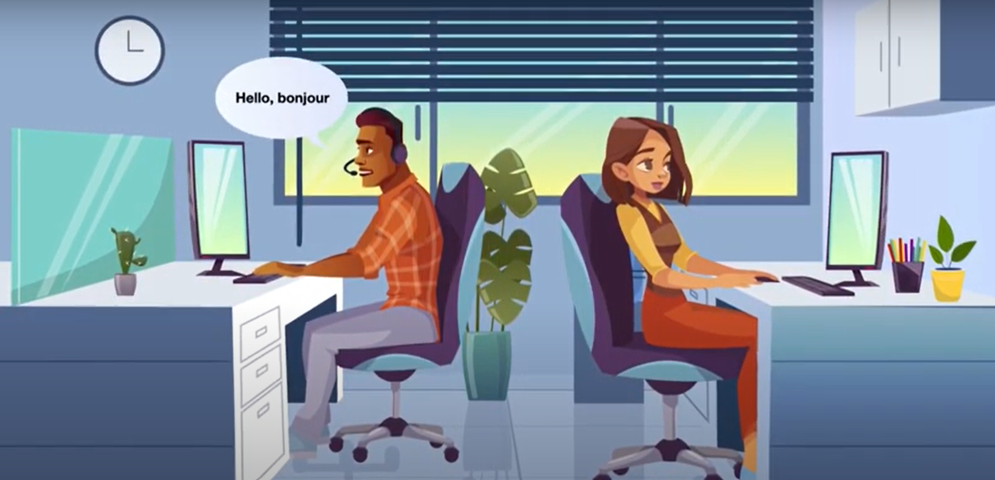
|
The active offer of service at Public Services and Procurement Canada
Hello! Bonjour! Since April 2021, Public Services and Procurement Canada (PSPC) has launched a course on the active offer of service. In this kit, you will find turn-key tools including their Intranet content on active offer of service, a video, a PowerPoint presentation, a background and key messages used to promote the course on active offer at PSPC.
|
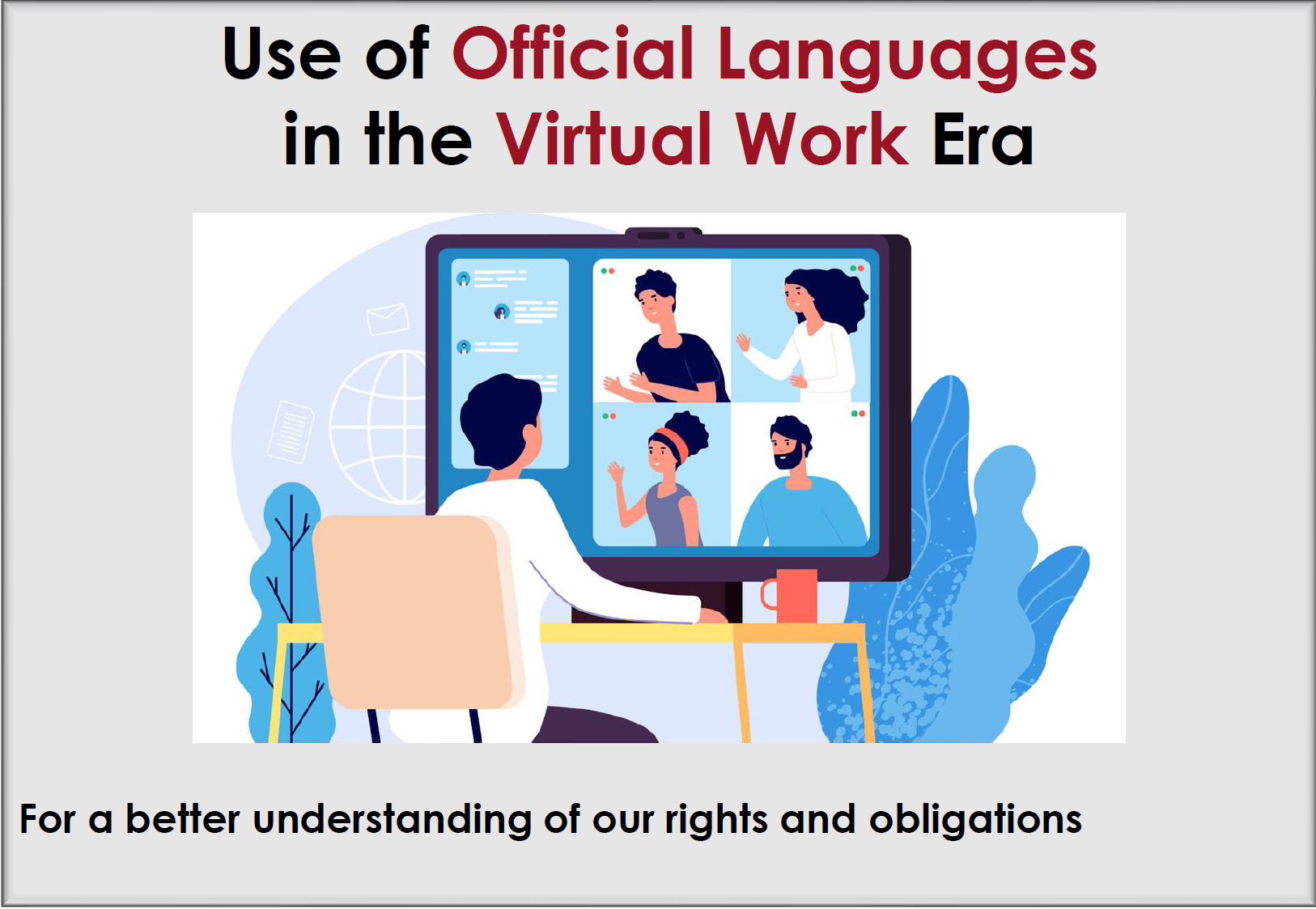
|
Use of Official Languages in the Virtual Work Era
This resource from the Canada Revenue Agency aims to provide a better understanding of official language rights and obligations, particularly in a virtual work environment.
|
Video Gallery
Watch videos on official languages.
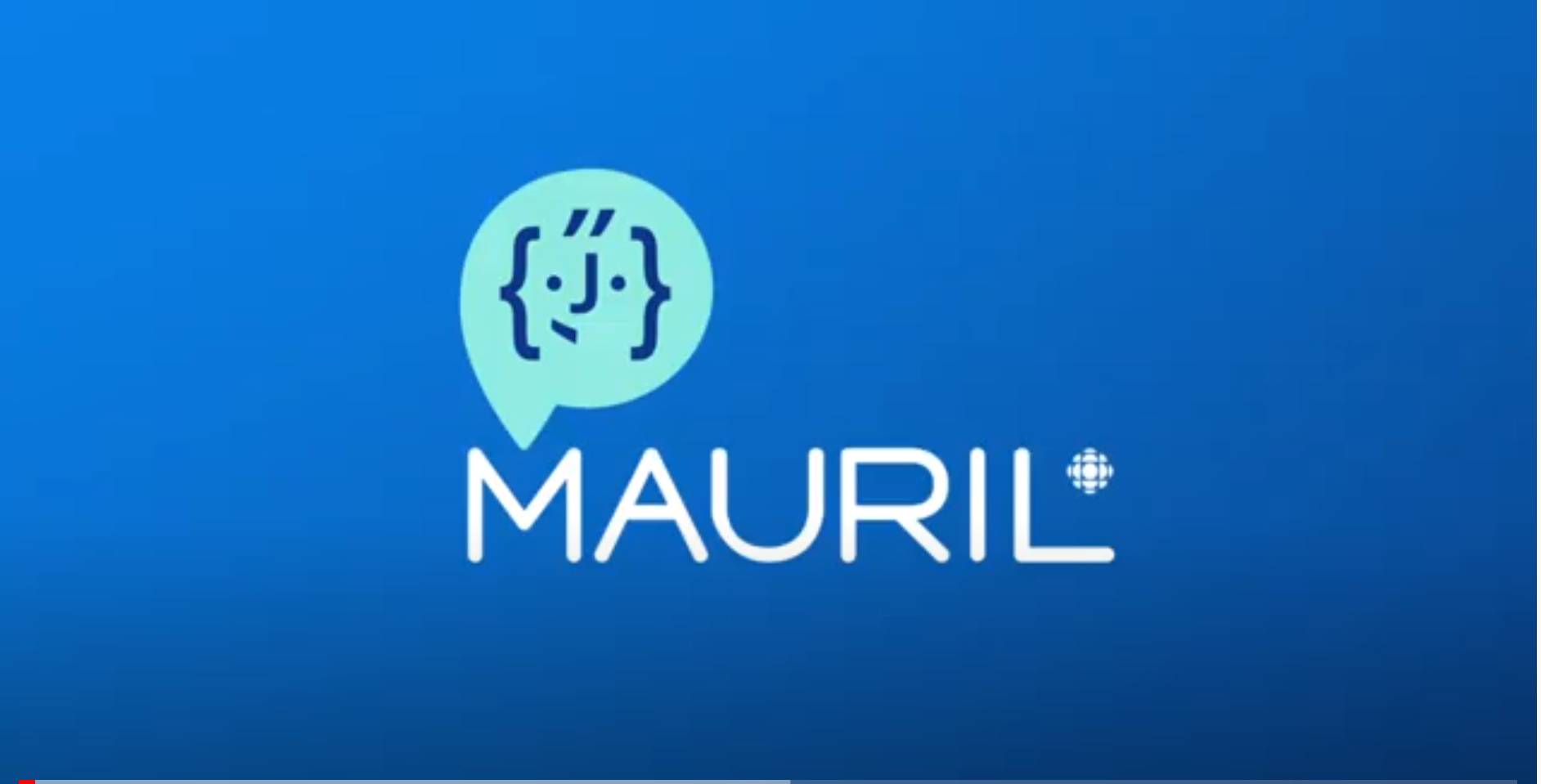
|
Mauril - Free digital plateform to learn French and English
CBC/Radio-Canada
|
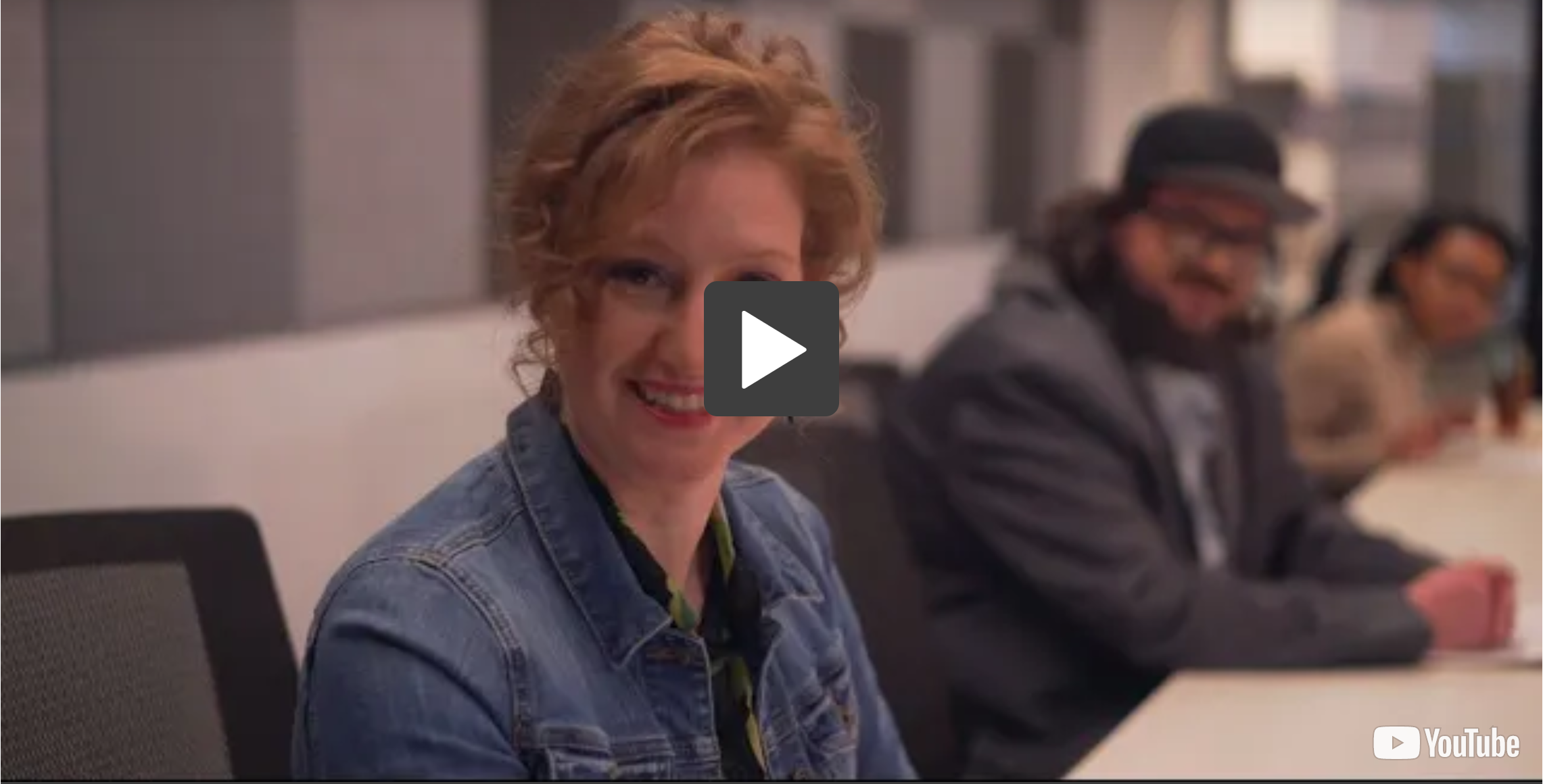
|
Official languages: are you the next Section 41 leader?, Improtéine
Canadian Heritage
|
Archived: 2021 Forum
Resources
Virtual Language Maintenance Program, Canada Revenue Agency
Video Gallery
Watch videos produced by federal employees presenting best practices, as well as videos on official languages.
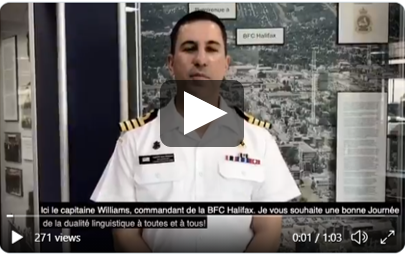
|
Video on linguistic duality from the Canadian Forces Halifax Base Commander, Capt(N) Sean Williams
Canadian Forces Base Halifax
|
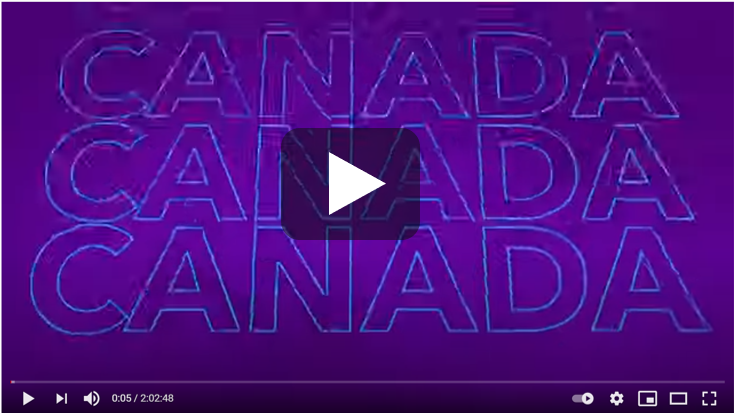
|
Canada Day 2020
Canadian Heritage
|

|
The Official Languages Act (video celebrating the diversity of Canadian accents)
Canadian Heritage
|
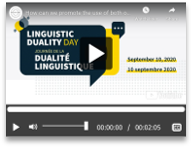
|
How can we promote the use of both official languages when teleworking?
Council of the Network of Official Languages Champions
|
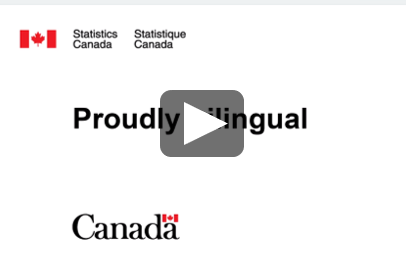
|
Proudly bilingual
Statistics Canada
|

|
Spotlight Professional Development Program Élan
Telefilm Canada
|
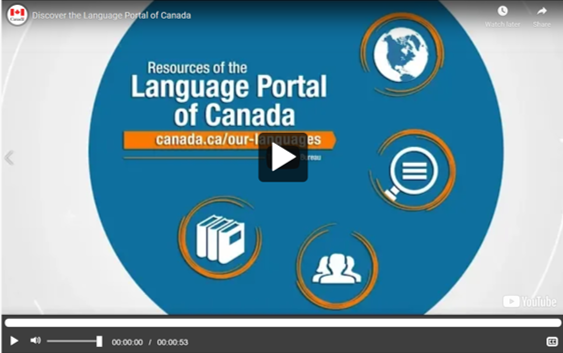
|
Discover the Language Portal of Canada
Translation Bureau, Public Services and Procurement Canada
|
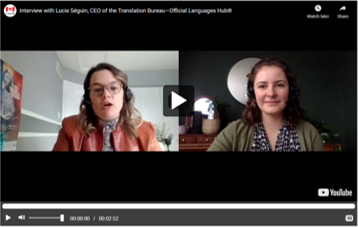
|
Interview with the CEO of the Translation Bureau on the Official Languages Hub®
Translation Bureau, Public Services and Procurement Canada
|
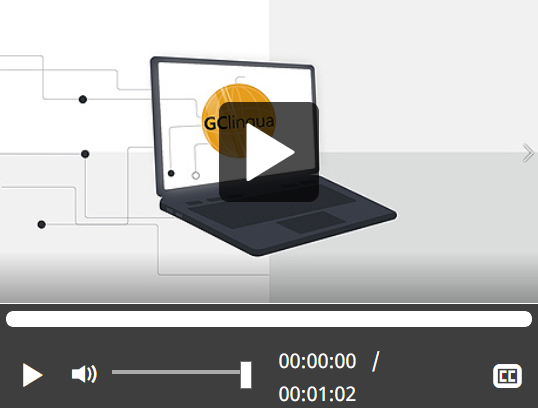
|
Public Services and Procurement Canada’s Translation Bureau presents GClingua, your portal to high-quality linguistic services
Translation Bureau, Public Services and Procurement Canada
|
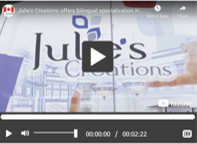
|
Bilingual business Julie’s Creations designs cabinetry, kitchens and bathrooms in Manitoba
Western Economic Diversification Canada
|
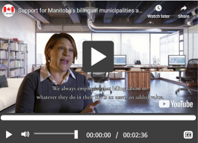
|
Support for Manitoba’s bilingual municipalities and entrepreneurs
Western Economic Diversification Canada
|
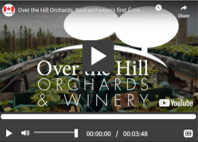
|
Over the Hill Orchards, Saskatchewan's first Économusée®
Western Economic Diversification Canada
|
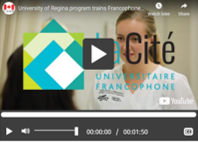
|
University of Regina program trains Francophone nurses
Western Economic Diversification Canada
|
|
